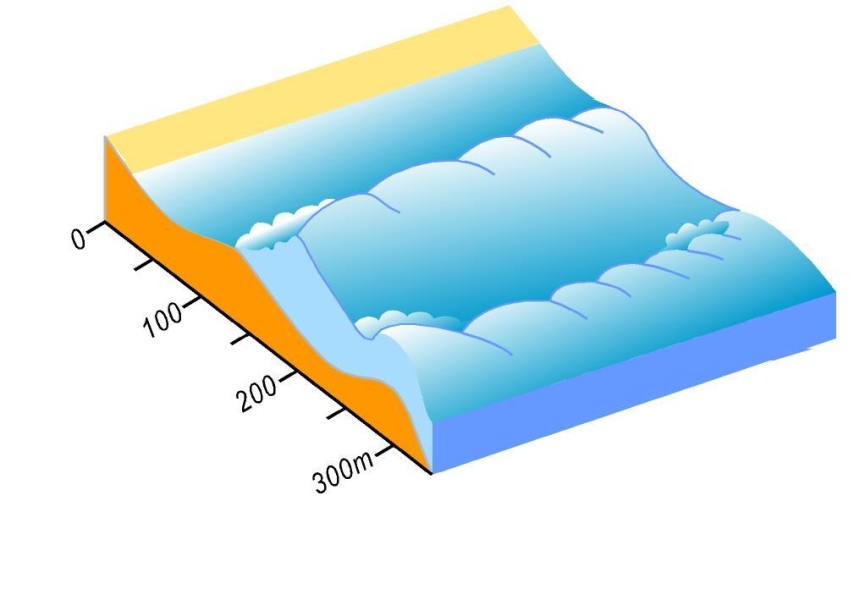Beach type refers to the nature of a beach, including the waves, tides and currents, the extent of the nearshore zone, the width and shape of the surf zone, including its bars and troughs, and the dry portion of the beach.
The beach types are products of the wave climate, tide range, beach morphology and beach sediment characteristics.
Wave-dominated
Wave-dominated beaches are those that are exposed to persistent ocean swell, waves and low tides (less than 2m).
- Reflective
- Intermediate - Longshore bar and trough
- Intermediate - Rhythmic bar and beach
- Intermediate - Transverse bar and rip
- Intermediate - Low tide terrace
- Dissipative
Tide-modified
Tide-modified beaches occur in areas of high tide range and usually lower waves. Tides usually range between 3 and 15 times the wave height and the wave height is less than 30 cm.
- Reflective + low tide terrace
- Reflective + bars and rips
- Ultradissipative
Tide-dominated
Tide-dominated beaches form in areas of high tide range and usually lower waves. They occur when the tide range is between 10 and 15 times the wave height and the wave height is very low.
- Reflective + sand flats
- Reflective + sand ridges
- Reflective + tidal mud flats
- Reflective + rock flats

